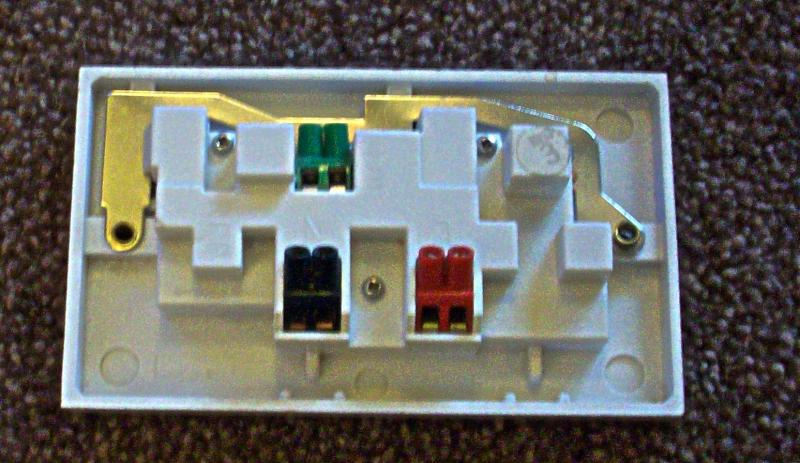Oh sorry - I didn't read, think or write carefully enough! What I should have said was that most sockets I buy have 2 earth terminals (since that's what's relevant to this discussion) - but, as you say, they only have one L and one N. It's years since I saw one of these offered for sale (although I still have a few tucked away):OOI what sockets do you buy? I only really ever use 3 brands, and they all have one L+N and 2 Earth (of which, I only ever use one)That was my first reaction - but that's what most sockets I buy today have - but it sounded as if DS was talking about something 'special'!
However, although they're nice to install, I'm not so sure about them safety-wise - at least in a ring final. With a ring final, if one of the L's or N's come's adrift, the user will be none the wiser (everything will still 'work' - unless the 'adrift conductor' touches something it shouldn't!), but the circuit's cable could get overloaded.
Kind Regards, John
I fail to see the point you are trying to make ? A wire
That's how I feel about ring finals regardless of how they're terminated in the socket outletsHowever, although they're nice to install, I'm not so sure about them safety-wise - at least in a ring final. With a ring final, if one of the L's or N's come's adrift, the user will be none the wiser (everything will still 'work' - unless the 'adrift conductor' touches something it shouldn't!), but the circuit's cable could get overloaded
Yes, I realise that is one of the downsides of ring finals. However, if one is going to have them, then those sockets with 2xLand 2xN terminals must increase the chances of a break in the L or N ring going unnoticed - so (unless there are compensating factors, which there might be) they must be, statistically speaking, 'less safe' than those with only one L and one N terminal (particularly if the two conductors are twisted togetherThat's how I feel about ring finals regardless of how they're terminated in the socket outletsHowever, although they're nice to install, I'm not so sure about them safety-wise - at least in a ring final. With a ring final, if one of the L's or N's come's adrift, the user will be none the wiser (everything will still 'work' - unless the 'adrift conductor' touches something it shouldn't!), but the circuit's cable could get overloaded).
Having said that, I seriously doubt whether a cable with a CCC of 20A would come to any harm, let alone cause a fire, if it were carrying 32A continuously (which is not going to happen in practice, anyway) - and if, as is more common, the cable has a CCC of 27A, then an 'overload' of 32A clearly isn't going to result in any catastrophes.
Kind Regards, John
Where did you get your'e statistics form JW2? As i have only ever found one manufacturer using the "six terminal method".
DS



